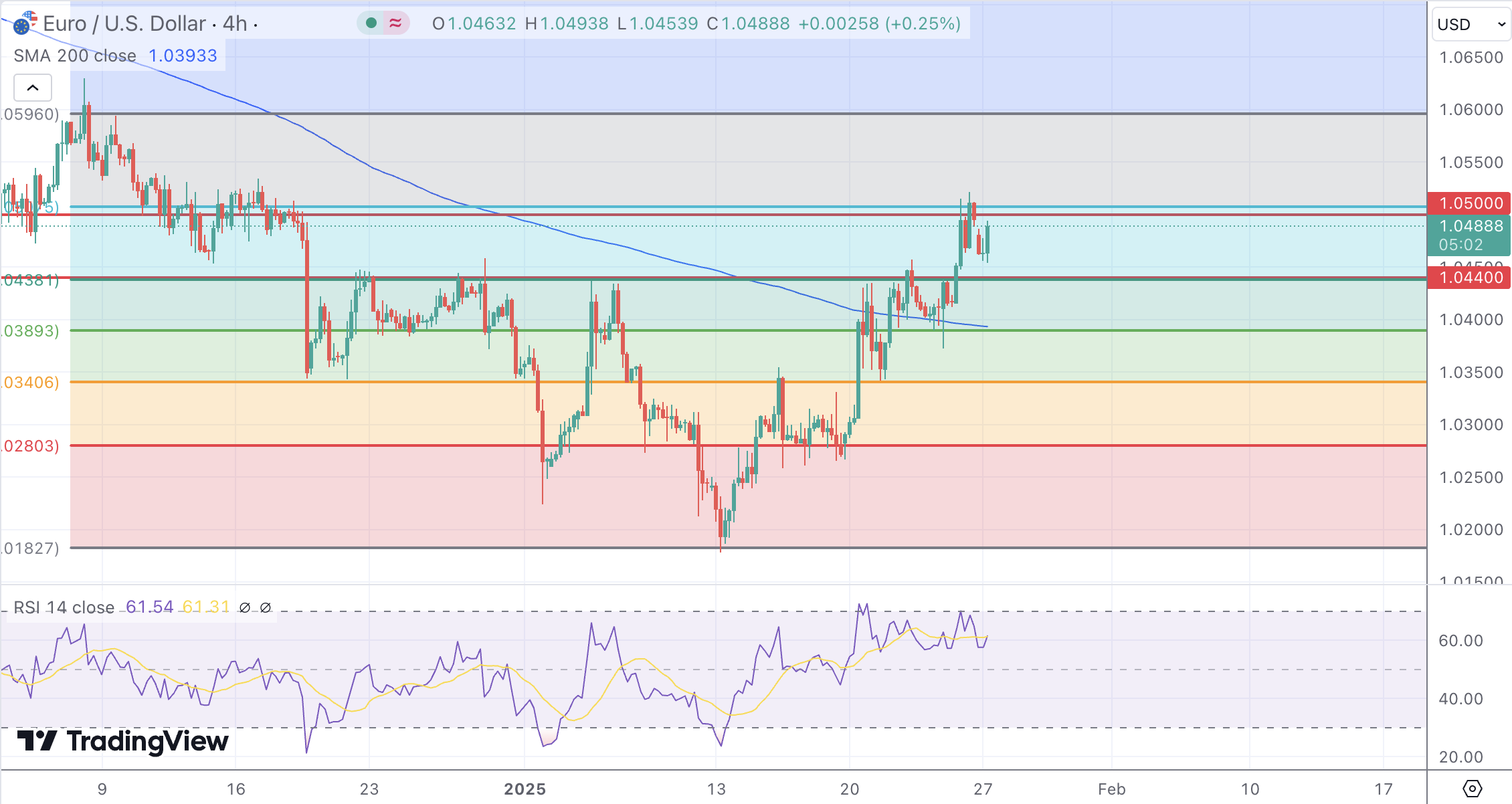Key Takeaways
- EUR/USD faces immediate support at 1.0440 and resistance at 1.0500.
- Eurozone PMI’s rise to 50.2 supports potential ECB rate hikes.
- DXY’s dip below the 50-day moving average indicates possible continued dollar weakness.
- Upcoming economic data and policy developments are critical for near-term direction.
Market Dynamics and Recent Performance
In the past week, the EUR/USD pair exhibited notable volatility. Early gains propelled the euro above the 1.0500 mark, reaching five-week highs. However, this upward momentum was short-lived as the pair faced renewed bearish pressure, retreating toward 1.0450. Factors contributing to this fluctuation include concerns over potential U.S. tariffs and mixed economic data from both the Eurozone and the United States.
Technical and Fundamental Influences
From a technical perspective, the EUR/USD’s recent decline brought it closer to key support levels. The 1.0440 level aligns with the 61.8% Fibonacci retracement of the latest downtrend, serving as immediate support. A breach below this could expose the pair to the 1.0390-1.0400 range, where the 200-period Simple Moving Average (SMA) resides.
On the upside, resistance is observed around the 1.0500 level. A sustained move above this threshold could pave the way for further gains, potentially targeting higher resistance zones.
Fundamentally, the euro found support from an unexpected rise in the Eurozone Purchasing Managers’ Index (PMI) to 50.2, indicating economic expansion and bolstering expectations for potential European Central Bank (ECB) rate hikes. Conversely, the U.S. Dollar Index (DXY) slipped below its 50-day moving average, signaling potential bearish momentum, influenced by a softer stance from the U.S. administration on Chinese tariffs.
Looking Forward
In the upcoming week, traders should monitor the EUR/USD’s interaction with the aforementioned support and resistance levels. Economic indicators, such as upcoming Eurozone inflation data and U.S. employment figures, will play crucial roles in shaping market sentiment. Additionally, any developments regarding U.S. trade policies or shifts in ECB monetary stance could introduce further volatility to the pair.


